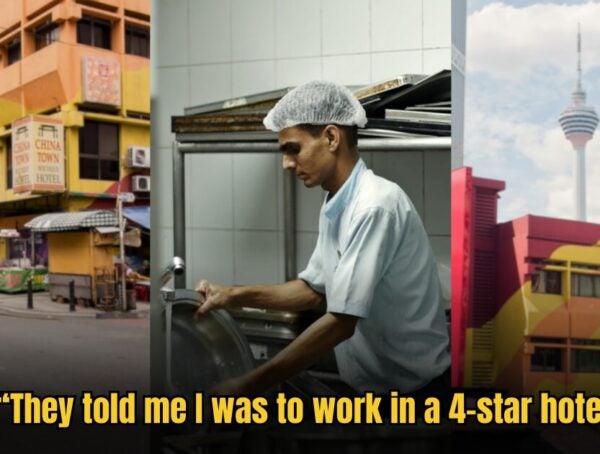Disclaimer: In Real Life is a platform for everyday people to share their experiences and voices. All articles are personal stories and do not necessarily echo In Real Life’s sentiments.
We’ve all been there. Whether it’s a quick and easy option for a casual dinner or a 1 AM means to simply fill your stomach, the safe bet is always going to be fast food. Malaysians are lucky to have an array of selections when it comes to burgers and fries – we can find them almost anywhere!
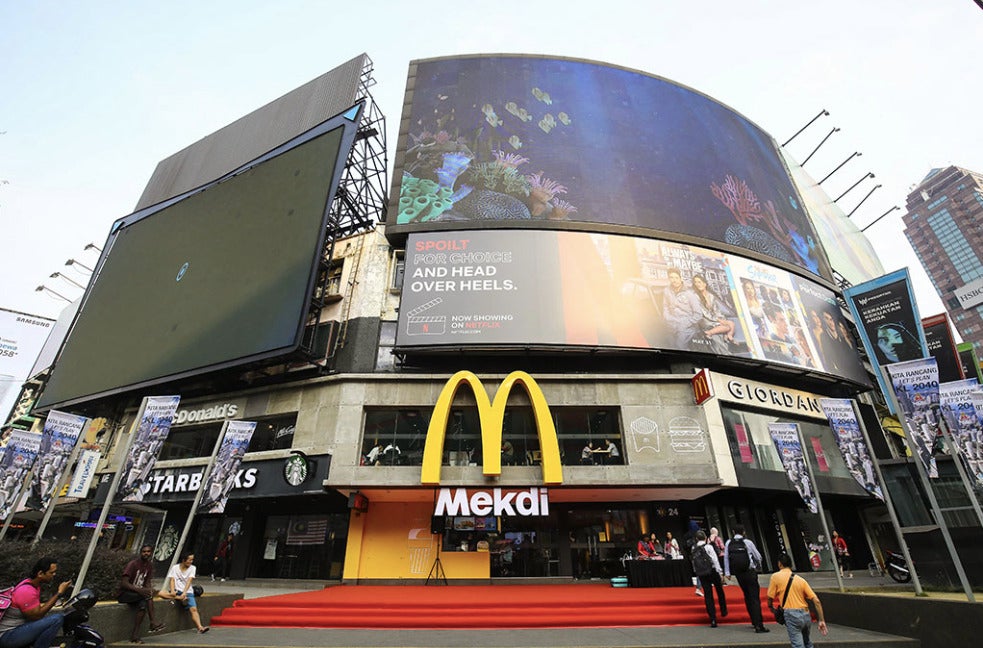
McDonald’s and KFC to Domino’s and Burger King: these are some of the prime western chains that have been attracting Malaysians for the longest time. They’re not always the cheapest, but they get the job done and it never takes too long.
But what if there was an alternative for the mentioned joints, and what if they were in front of us all this time? And what if these alternatives sit in perfectly with Malaysian tastebuds, cost significantly less, are arguably healthier, and check all the boxes for it to be “fast food”?
How would you define “fast food”?
When we say fast food, it usually refers to food that can be prepared and served quickly. It can come from many places: sit-down restaurants, counter service, take-out, drive-thru, and delivery. Fast food is popular because the food is meant to be inexpensive, convenient, and tastes good.
But to no surprise, western brands have always been priced significantly higher compared to local mum-and-pop shops due to several factors such as franchising fees and whatnot. This leads to a higher cost that translates to an RM15 burger at McD.
One of the main points of fast food is to simply have a quick meal, be done with it and leave with a full stomach without worrying too much. But of course, it’s not a secret that fast food predominantly includes saturated fat, cholesterol, and added sugar and sodium to make it more flavourful and satisfying.
So yeah, maybe not the healthiest option.
If we’re basing it off convenience, then there are a ton of local favourites that can also be classified as fast food!
-
Nasi kandar
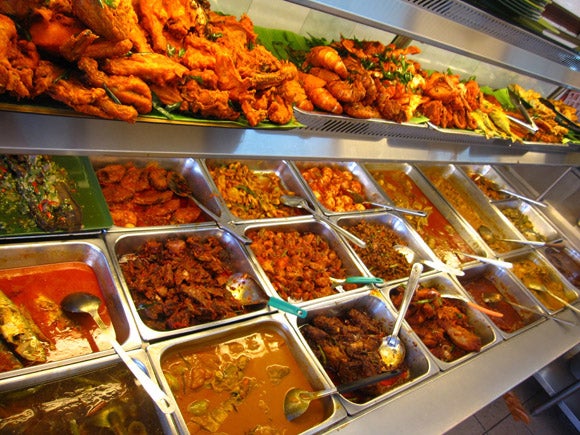
It doesn’t get any quicker than this, guys. You walk into your Kayu, give them the “nasi satu, boss”, a few scoops of whatever you’d like here and there, followed by the prestigious kuah campur, take your seat with your teh ais kurang manis, devour the meal and you’re out of there.
Zero time wasted, fast food has never been this fast.
-
Chap fan
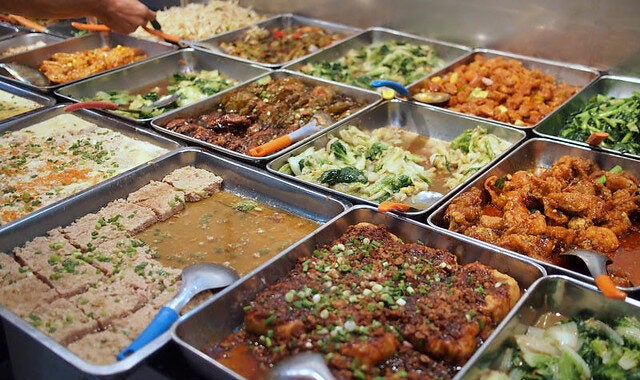
Another staple in the quick and cheap meal industry among Malaysians. For about RM6 you get to be filled to the brim with your favourite Chinese home-cooked dishes. Exactly the same routine as nasi kandar, you get to be the boss of your own plate and decorate it with almost whatever you like. From the moment you walk in to when you leave with a happy stomach, it takes you about 10 minutes.
The best part about these ready-to-go meals is that you get to have your own combination of protein, carbs, fibre and anything else however you want it.
-
Warung-warung
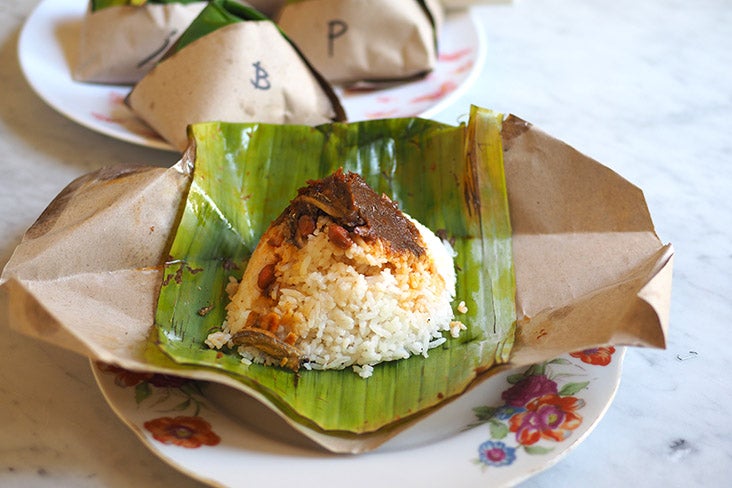
Ah, my personal favourite, the warung mak cik. On rare mornings that I decide to have a ‘special’ breakfast, I take my business to the local small gerais with the loveliest mak cik pak cik and have their nasi lemak bungkus. The beauty of that is that the packets are usually ready to go on the table. All you literally have to do is pick it up, grab a flimsy plastic spoon and you can chow away with a side of kopi o.
There is also always something quite special about these small shops: they’re far from luxurious, they’re often simple looking with old ceiling fans that creak and one working sink. Personally I find it comforting; it sort of slows you down where you find that moment of peace.
Now that’s something McD could never offer you. It’s way too corporate, plus you can’t name me a time where you walk in and there were already RM 1.50 burgers on the table waiting for you.
Tune into your hunger and fullness cues, enjoy your meal!
Consider what you are hungry for. Is it the flavours, scents, textures, and temperature? Or the experience, the price, and the nutrients. Fast food is known as a meal on the go, many people eat in their cars or while doing another activity.
Everyone has different energy and nutrient needs, so the size of the meal may be smaller or larger than what your body needs. By listening to your hunger and fullness cues, it can help you decide if you need more food to satisfy your needs.
For more stories like this, read: 5 Malaysians Share Their Favourite Non-Mainstream Local Food and Food Safety & Handling In Malaysia Is AWFUL: 4 Reasons Why You Should Eat At Home
You might also like
More from Real Skills
How I Saved Almost RM50,000 On Buying My First Car
Here's how this Malaysian man with a RM3,500 salary saved RM50,000 on his first car.
Angry M’sian Boss Demands Unpaid Overtime Over Raya, Causes 9 Staff To Quit
An anonymous employee at a local SME shares how a bad-tempered boss eventually caused 9 staff to quit before Hari …
I Studied In Chinese School As A Malay Boy, Here’s What I Learnt
Every time I used Mandarin outside of school, family members would come up to me at gatherings and ask me …








